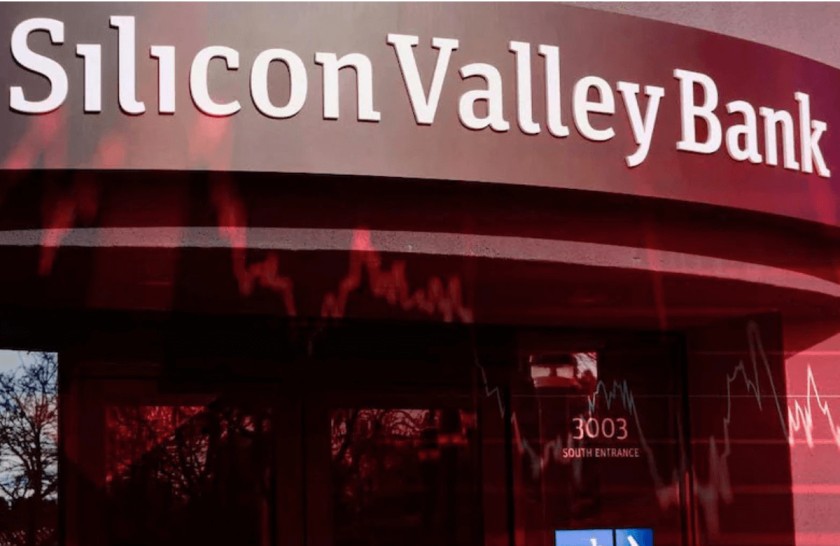- April 28, 2023
Avoiding an SVB-like event: RBI’s proactive steps for financial security

Indian banks are well-prepared to withstand financial challenges, thanks to regulatory measures and adaptability to interest rate cycles.
The recent downfall of notable financial institutions such as Silicon Valley Bank and Signature Bank in the US, and Credit Suisse in Europe, has sounded an alarm for financial institutions worldwide.
Indian banks, on the other hand, are comparatively safeguarded against such occurrences, as the Reserve Bank of India (RBI) has implemented several measures to ensure their resilience. These measures comprise the uniform application of capital and liquidity requirements to all banks, regardless of their exposure and asset size, as well as the establishment of an Investment Fluctuation Reserve (IFR) to provide a buffer against unfavourable yield fluctuations.
The IFR functions as a shock absorber in times of financial tightening and serves as a counter-cyclical macroprudential tool during an easing interest rate cycle. It does this by transferring the gains earned from the sale of investments. As per the RBI’s Financial Stability Report (FSR) from December 2022, the system-wide IFR for scheduled commercial banks (SCBs) amounted to 2.2% of the investment portfolio held for trading (HFT) and available for sale (AFS).
The IFR has proven to be instrumental in helping banks absorb losses stemming from the rise in G-sec yields during Q1 FY23 and consequential treasury losses, which totalled 4.9% of their operating profit
Furthermore, the RBI has imposed a limit on banks, restricting them from investing more than 23% of their deposit liabilities in HTM (held to maturity) portfolios. This implies that a 10% loss suffered in banks’ HTM portfolios would only result in a 2.3% impact on deposits.
The RBI remains thorough in its biannual assessment of cooperative banks, NBFCs, and SCBs. It conducts regular evaluations of financial institutions, regardless of the size of their balance sheets, to identify vulnerabilities and ensure that even smaller institutions are scrutinized.
In India, the disparity between the deposit rate and policy rate is considerably narrower than it is in the US. This can be attributed to the exceedingly low policy rate that has been in place since the 2008 financial crisis.
According to the RBI’s Basic Statistical Returns for March 2022, Public Sector Banks (PSBs) account for 60.1% of India’s deposits, and approximately 63% of total deposits are held by “sticky” retail customers, indicating that deposit withdrawals are likely to be restricted.
Moreover, Indian banks have a greater portion of their assets in loans as opposed to bonds, rendering them less susceptible to escalating interest rates. While there is a risk of Asset-Liability Mismatch (ALM) arising from increases in policy rates, it is not a significant concern within the Indian banking system.
Furthermore, there has been a noticeable enhancement in various banking metrics following a phase of bank balance sheet clean-up and recapitalization in recent years. These include high Net Interest Margin, low net Non-Performing Assets (NPAs) to net advances ratio, and a capital adequacy ratio that has been consistently above Basel III norms for the top 10 major banks.
Interest rate cycles have been quite prevalent in India, as they align with the RBI’s financial conditions and goal to maintain financial stability and manage inflationary pressures. This has equipped Indian banks with the necessary skills to handle interest rate cycles, unlike Advanced Economies (AEs) where long-term interest rates have remained close to zero for an extended period, making financial markets vulnerable to sudden increases in rates to control inflation.
The Indian banking system appears to be well-prepared and equipped to tackle potential challenges that may arise from rising interest rates and ALM. The considerable percentage of deposits held by sticky retail customers and the emphasis on loans over bonds in asset allocation make Indian banks more resilient to increasing interest rates. Furthermore, recent progress in various banking indicators and alignment with interest rate cycles have reinforced the robustness of the Indian banking system.
The RBI’s comprehensive regulatory measures, coupled with the recent improvements in the Indian banking system and its ability to adapt to frequent interest rate cycles, have significantly reduced the likelihood of a financial crisis similar to the SVB event occurring in India. These factors also contribute to maintaining the medium-term growth trajectory. Despite the challenges posed by the pandemic and geopolitical conflicts, India’s economy has performed well in FY23, outpacing other major economies and exceeding the trend rate, with growth expected to be around 7%. This strength in the economy is a positive sign amid the prevailing global economic uncertainty.
